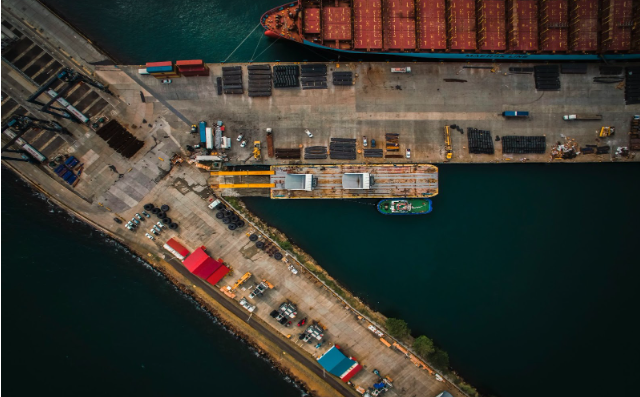
Photo courtesy of Unsplash
At a busy port, time isn’t just money; it’s momentum. Delays at the entry gate aren’t just minor hiccups; they’re operational risks. In busy ports, where every second counts, long wait times at the security desk create bottlenecks that ripple through the entire supply chain. Paper logbooks, manual data entry, and outdated systems stall the flow of people and vehicles and create many hurdles for your business. This article will explore how a lagging security desk can slow down your operations and how to overcome that.
How Manual Check-In Slows Down Everything
Your security desk is the first point of contact for shipments. However, instead of being efficient, it often becomes the slowest part of the process. Here’s how outdated systems cause delays:
- Manual entry wastes time: Every visitor or driver has to wait while the guard writes down details like name, company, vehicle number, and purpose of visit. This adds up, especially during peak hours.
- Data entry errors are common: Handwriting issues, spelling mistakes, or missing fields can sometimes make the logbook unreliable. This can create confusion during audits or investigations.
- Zero real-time visibility: Paper records don’t provide real-time information on who is currently inside the premises. This lack of tracking increases the risk of security breaches.
- Repeat visitors aren’t streamlined: Regular contractors or suppliers must start over each time, repeating the same process with no memory in the system. This can waste time and cause frustration among visitors.
- Limited reporting and analytics: You can’t generate daily reports or track visitor trends without going through pages manually. Even a five-minute delay per person can create hours of hold-ups across hundreds of daily visitors.
The Role of Visitor Management Software in Streamlining Ports
Ports are high-traffic, high-pressure environments where every minute counts. Relying on outdated, manual processes at the entry gate only slows things down and increases the risk of error. That’s where visitor management software steps in. Here’s how it can help:
- Faster check-ins mean fewer bottlenecks: Digital systems log visitor data in seconds. This can go a long way in reducing long lines and vehicle pileups at port entry points.
- Accurate records that are always available: Cloud-based logs ensure you always know who entered, when, and for what purpose. Your staff won’t have to deal with missing paper slips or manual errors.
-
- Improved security protocols: Security teams can track visitor flow in real time. This helps them make faster, more informed decisions during peak hours or emergencies.
- On-the-spot badge printing: Digital systems make it easy to generate temporary access passes or ID badges in seconds, helping ensure that only authorized individuals gain entry.
- Time-saving integrations: Many platforms sync with access control systems, ID badges, and vehicle databases to create a seamless visitor experience.
Implementation Without Interrupting Daily Operations
Adopting new systems in a fast-paced environment like a port can feel overwhelming. However, upgrading your visitor check-in process doesn’t have to disrupt the entire workflow. With the right approach, you can implement visitor management software gradually, without slowing things down. Here’s what a simple rollout might look like:
- Start with one entry point: Choose a less-busy gate to pilot the new system. This helps you test and refine the process with minimal impact.
- Train staff in short phases: Roll out your training in phases to keep things running smoothly. Begin with guards and receptionists who handle visitor flow. You should aim to offer hands-on sessions and simple guides.
- Scale to other areas: Once things run smoothly at one gate, extend it across all checkpoints. Use early feedback to fix issues, tweak settings, and ensure everyone’s comfortable using the system.
- Keep communication open: Update port staff regularly about the changes and share small wins. This builds support and eases the transition.
Endnote
Ports run on efficiency, and the first point of contact is where it often breaks down. Relying on outdated systems adds friction to an already complex operation. By replacing manual logbooks with a smart visitor management software solution, you save time, reduce errors, and improve the overall flow of operations.





